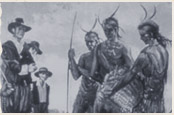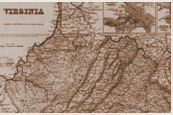Common Sense
ushistory.org
Declaration of Independence
United States Archives: America's Historical Documents
Description: Thomas Paine anonymously published the pamphlet Common Sense in Philadelphia in January of 1776. Paine’s essay was an immediate sensation in the colonies and throughout the world. In Common Sense, Paine directly blames King George III for causing economic suffering in America. The pamphlet also calls for an immediate declaration of independence from Britain due to a moral obligation to other colonies in the world. Also, Paine outlines a sketch of a plan for government that includes sovereignty for the people and a government with checks and balances. His writing rallied colonists to call for independence and popularized the idea of the natural rights of man.
This link provides a transcript of Common Sense with quick links to each chapter. Also, the United States Archives provides images and also transcripts of the Declaration of Independence.
Teaching Tips:
"Do Now" Suggestions
- Take key phrases of Common Sense and interpret them. Describe the impact of the ideas on colonists on the verge of declaring their in dependence. Use phrases such as: “Time makes more converts than reason” or, more complicated, “Society in every state is a blessing, but Government, even in its best state, is but a necessary evil; in its worst state an intolerable one: for when we suffer, or are exposed to the same miseries by a government, which we might expect in a country without any government, our calamity is heightened by reflecting that we furnish the means by which we suffer.”
- Discuss the how the technological advancements of the printing press allowed for the widespread dissemination of ideas. What impact did technology have on the American Revolution?
- Discuss: How does Common Sense compare to John Locke’s Second Treatise of Government?
- Take the four main parts of Common Sense. Assign a group of students to each section. Have the students gather information in the sections such as reasons to declare independence, wrongs of England, models of government, or ideas for the birth of new government. When each group has an idea of their synopsis, come together as a class to create an outline of the ideas that the American colonists took from the pamphlet. Then, compare the ideas of Common Sense to the ideas of the Declaration of Independence, John Locke’s Second Treatise of Government, or the Preamble of the Constitution using a graphic organizer.



